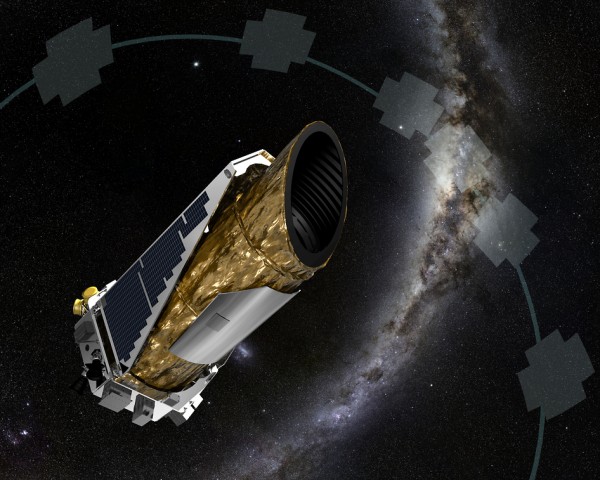NASA's Kepler Discovers Oldest Known Earth-Mass Planets
| Marco Foronda | | Dec 26, 2014 02:32 AM EST |
(Photo : NASA Ames/JPL-Caltech/T Pyle) The K2 mission observes a specific portion of the distant sky for 80 days.
Astronomers have detected low-mass, rocky planets around a star that's at least 11.2 billion years old, or more than twice the age of our own solar system.
Astronomers from University of Birmingham observed KOI-3158, a pale yellowish-orange star that lies some 117 light years away in the constellation Lyra.
Like Us on Facebook
Data gathered from NASA's Kepler Space Telescope revealed the ancient metal-poor star harbors five terrestrial-mass planets whose origin dates back to the dawn of the Milky Way.
Discovering terrestrial-type planets around such an old, metal-poor star may have staggering implications.
"This is confirmation that earth-sized planets have formed throughout most of the galaxy's history," said Tiago Campante, an astronomer at the University of Birmingham (U.K.), and the paper's lead author.
Kepler used stellar photometry to look for periodic dips in starlight because of the transits of planets across the face of their stars. As a result, astronomers were able to conclude these five new rocky planets orbit their parent star in less than 10 days. These planets' orbits are less than one-fifth Mercury's distance from the Sun, making them extremely hot.
It goes to show these planet's sizes and potential make-up seem eerily akin to our own inner solar system. The system's three intermediate planets are the size of Mars and the outermost planet is slightly smaller than Venus. The innermost planet is the size of Mercury.
The new findings will likely help ignite a paradigm shift of how planet hunters and astrobiologists view terrestrial planet formation within the Milky Way.
TagsNASA, Kepler space telescope, space exploration, KOI-3158, constellation of Lyra, star constellation, Milky Way, planets
©2015 Chinatopix All rights reserved. Do not reproduce without permission
EDITOR'S PICKS
-

Did the Trump administration just announce plans for a trade war with ‘hostile’ China and Russia?
-

US Senate passes Taiwan travel bill slammed by China
-

As Yan Sihong’s family grieves, here are other Chinese students who went missing abroad. Some have never been found
-

Beijing blasts Western critics who ‘smear China’ with the term sharp power
-

China Envoy Seeks to Defuse Tensions With U.S. as a Trade War Brews
-

Singapore's Deputy PM Provides Bitcoin Vote of Confidence Amid China's Blanket Bans
-

China warns investors over risks in overseas virtual currency trading
-

Chinese government most trustworthy: survey
-

Kashima Antlers On Course For Back-To-Back Titles
MOST POPULAR
LATEST NEWS
Zhou Yongkang: China's Former Security Chief Sentenced to Life in Prison

China's former Chief of the Ministry of Public Security, Zhou Yongkang, has been given a life sentence after he was found guilty of abusing his office, bribery and deliberately ... Full Article
TRENDING STORY

China Pork Prices Expected to Stabilize As The Supplies Recover

Elephone P9000 Smartphone is now on Sale on Amazon India

There's a Big Chance Cliffhangers Won't Still Be Resolved When Grey's Anatomy Season 13 Returns

Supreme Court Ruled on Samsung vs Apple Dispute for Patent Infringement

Microsoft Surface Pro 5 Rumors and Release Date: What is the Latest?










